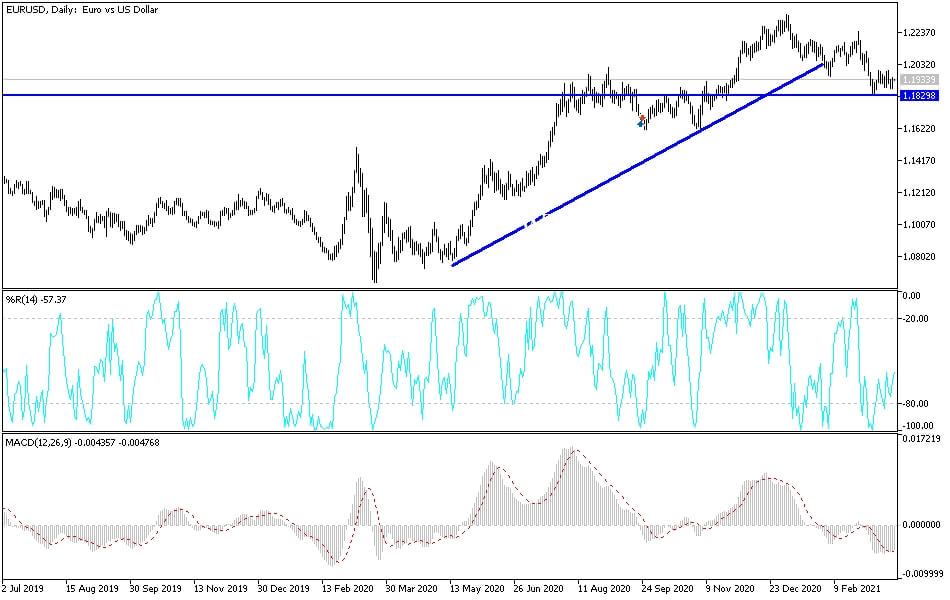The EUR/USD pair had a bearish start to the week, moving to the support level of 1.1875 before settling around the resistance level of 1.1935 ahead of testimony from Federal Reserve Chairman Jerome Powell. The currency pair has been exposed to a state of instability in light of the recent developments in the Turkish Central Bank. The euro has been the preferred “financing currency” in the market since January when the European Central Bank (ECB) retreated from commenting on the euro's rise which saw the speculative community fall in love with the euro and the dollar.
Therefore, the euro was sold against higher-yielding commodities and emerging market currencies this year in a process that included the EUR/USD, which the lira was a major beneficiary of due to the November policy shift from the Central Bank of Turkey (CBRT) under then-Governor Naji Aghbal.
“We will not turn to the bullishness of the Turkish lira as long as Erdogan effectively manages the central bank, and the renewal of the TRY is a bigger problem for the euro compared to the US dollar,” says Martin Enlund, Chief Forex trategist at Nordea Markets.
Europe's handling of the COVID-19 crisis is definitely affecting the EUR. The third wave of the epidemic now appear to be a reality for France, the Netherlands and Italy, which has led to new lockdowns and delays the day in which Europe can play its part in the global recovery. The growing infections have seen large parts of Italy and France return to a "lockdown" situation, while Germany has warned of lengthy restrictions and the Swiss authorities have canceled plans to reopen their doors until progress is made on vaccines that have not yet started.
Meanwhile, countries that have led the vaccination race, such as Israel, the United Kingdom and the United States, could reopen closed parts of their economies months earlier than Europe. This is the outlook for growth and European Central Bank policy that differs from other global economies and is increasingly referred to as a price driver for the Forex market, although the EUR/USD pair has recently demonstrated remarkable resilience.
Headwinds from vaccine problems and the third wave of contagion, combined with higher US bond yields, have already forced the European Central Bank to introduce bond purchases under its quantitative easing program to prevent borrowing costs from rising too much.
German authorities were expected to extend the closure measures again and may tighten some restrictions as they face a steady increase in new infections from coronavirus, but they are leaving schools open for the time being. Chancellor Angela Merkel and the 16 state governors, who are responsible for imposing and lifting restrictions in a decentralized Germany, held a videoconference nearly three weeks after the recent agreement on a multi-step plan that paved the way to relax some of the rules. Since then, infections have increased steadily, with the most contagious variant first discovered in Britain becoming dominant. Most of the lockdown restrictions are currently expected to last through March 28. The chancellery proposes an extension until April 18.
Technical analysis of the pair:
On the daily chart, there is some neutrality in the performance of the EUR/USD currency pair, with a stronger bearish bias if it moves around and below the support level of 1.1880. We expect the pair to move towards stronger descending levels and after that to 1.1800 and 1.1725. On the upside, as I mentioned before, the bulls will try to move steadily above the psychological resistance of 1.2000 so that the bullish opportunity will be stronger.
Today's economic calendar:
Amid the absence of Eurozone data, more focus will be placed on the reaction from the results of the US economic data, including current accounts and the number of new US home sales, and the testimony of Federal Reserve Chairman Jerome Powell.


